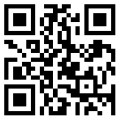应用于个体神经阻滞的表面解剖知识
图像的方向和适当的射线照相地标的识别
针插入的识别点和方向角
识别与深骨结构的接触
拔针方向改变角度的原理
模拟的终点是正确的射线照相外观
需要精确的针头放置以确保许多诊断性疼痛诊所的功效,并且在使用神经溶解解决方案时是必不可少的。放射线检查以确认应放置针头应作为常规检查,为此必须进行实际培训
不熟悉该技术的受训人员尝试进行区域麻醉可能会给患者带来不舒服和长时间的手术
AR351脊椎穿刺模体,Adam,Rouilly脊椎穿刺模体可用于训练以下项目:
腰交感神经阻滞内脏神经阻滞
在所有脊柱水平进行硬膜外注射
颈,胸和腰椎小关节注射和后原发性支气管射频去神经
颈椎小关节注射
三叉神经节阻滞或射频针放置
腹腔神经阻滞
胃下神经阻滞
关节注射
AR351脊椎穿刺模体,Adam,Rouilly脊椎穿刺模体特点:
人体模型由特殊涂层的塑料人体骨骼组成,头部覆盖着人造皮肤,躯干覆盖着织物,受训人员可以在其上练习在X射线图像增强器控制下放置针头人体模型的X射线密度低,因此减少了模拟程序中使用的辐射剂量






The Regional Anaesthesia Simulation Manikin has been designed by a Consultant Anaesthetist at the Manchester and Salford Pain Centre for training anaesthetists in correct needle placement in Nerve Blocks for pain management.
Knowledge of surface anatomy applied to the individual nerve blocks
Orientation of image and identification of appropriate radiographic landmarks
Identification point of needle insertion and angle of direction
Recognition of contact with deep bony structures
Principle of withdrawing and directing needle to alter the angle
The end point of simulation is the correct radiographic appearance
Accurate needle placement is required to guarantee the efficacy of many diagnostic pain clinic blocks and is mandatory when neurolytic solutions are used. Radiological screening to confirm needle placement should be routine and training for this needs to be practical
Attempts at regional anaesthesia by trainees who are not familiar with the techniques may result in uncomfortable and prolonged procedures for patients
The Manikin can be used to teach the following Nerve Blocks:
Trigeminal ganglion block or radiofrequency needle placement
Cervical facet joint injection
Epidural injections at all spinal levels
Lumbar sympathetic block, splancnic, coeliac and superior hypogastric nerve blocks
Lumbar facet joint injection and radio frequency denervation of posterior primary ramus
Sacroiliac joint injection









